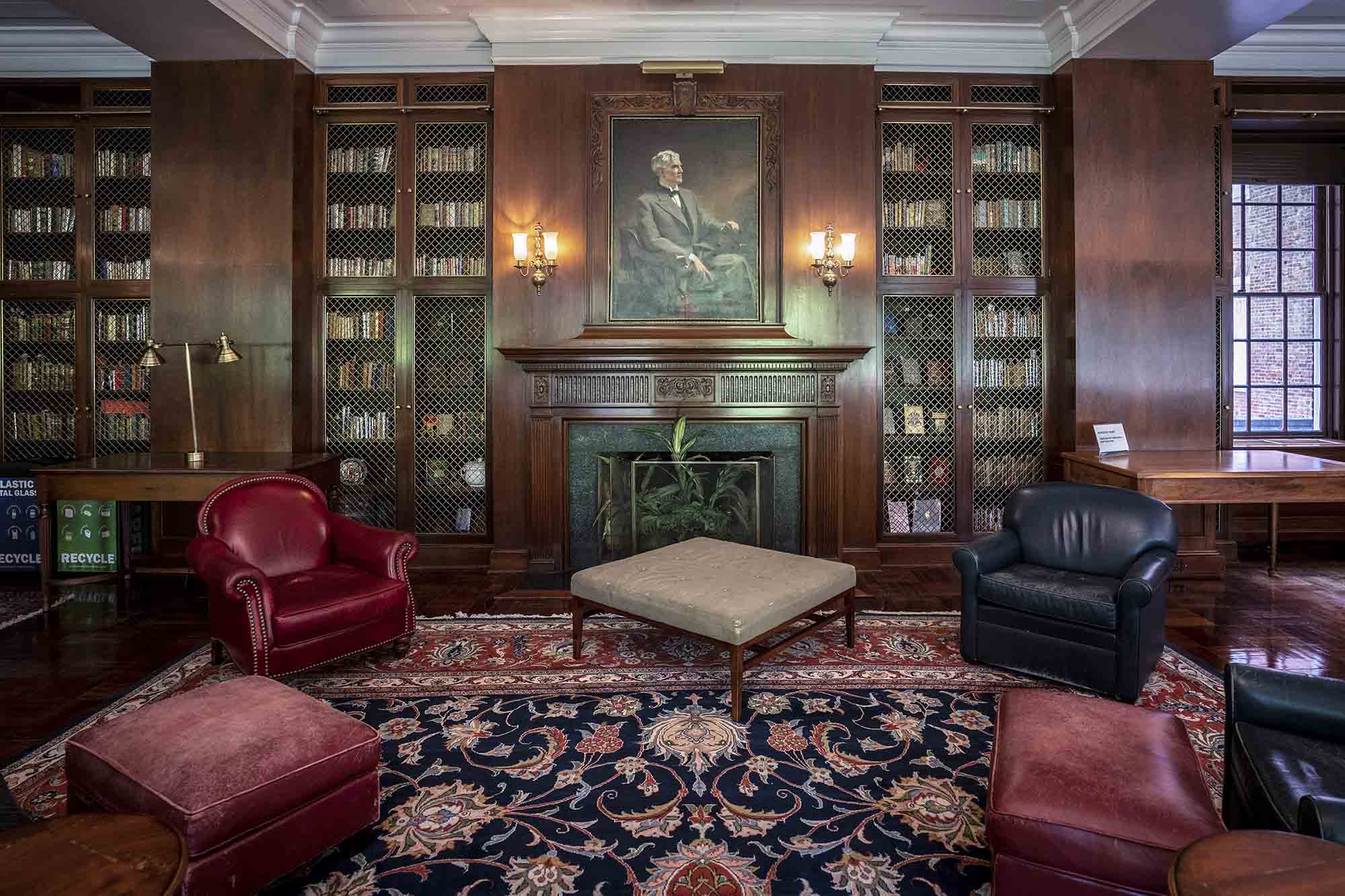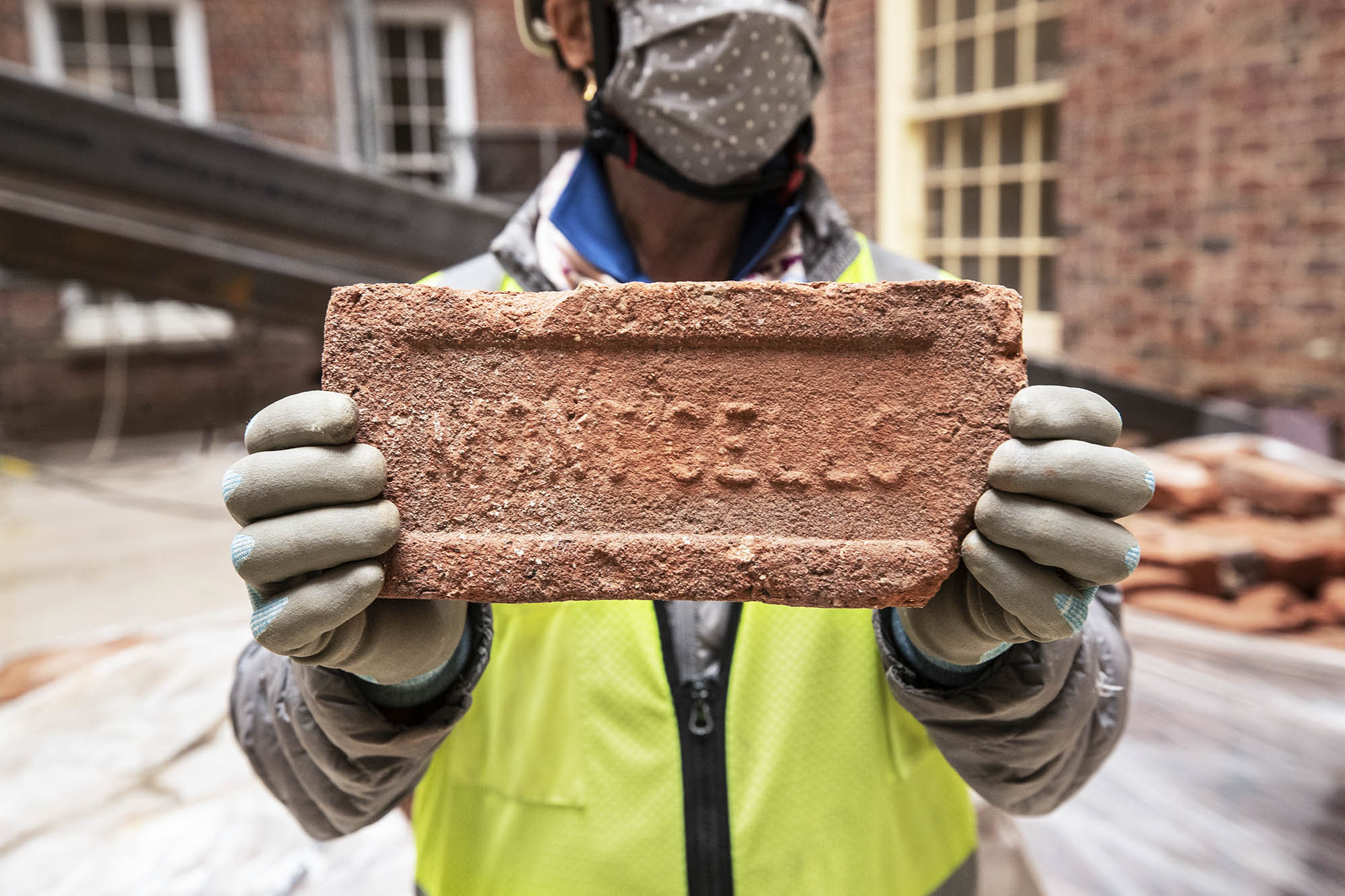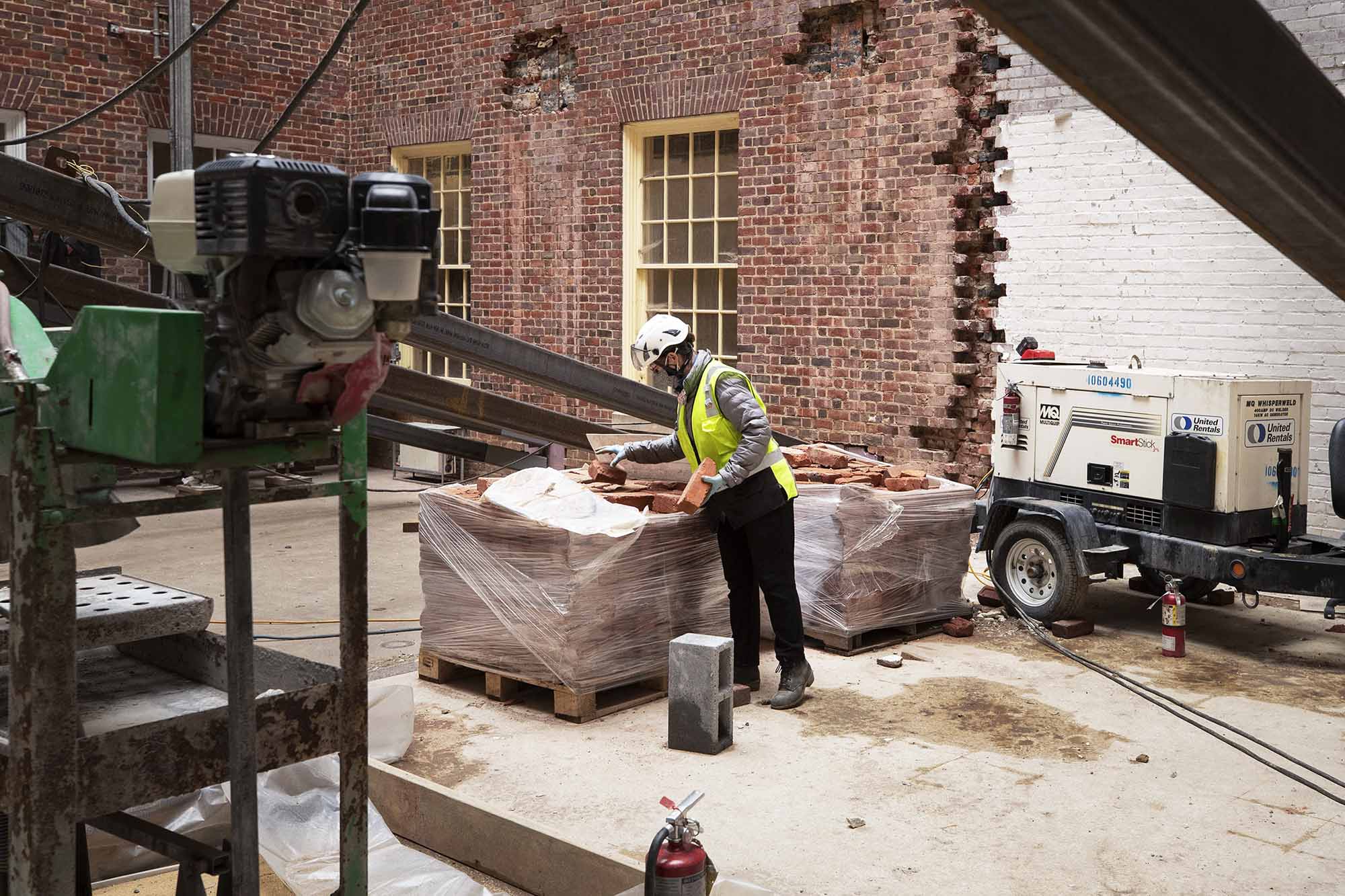A brick is not always just a brick.
In the extensive renovation of the University of Virginia’s Alderman Library, workers for contractor Skanska have found locally made, wood-molded “Monticello” bricks. The over-sized bricks, 4 inches by 3 inches by 9 inches, weighing in at 5 ¾ pounds, known in the trade as a “jumbo brick,” were found inside the chimney in the McGregor Reading Room.
The reading room was a gift to the University from Tracy W. McGregor of Detroit, who had a large American history library and an interest in Virginia. A visitor to Charlottesville, he founded the McGregor Fund to support charitable works. Upon his death in 1936, his book collection passed to the trust, with instructions that it be donated to an institution that had “fine ideals of higher education.” In 1938, the fund trustees donated the collection to UVA.
Alderman Library was already under construction at the time, but a space was set aside to house McGregor’s collection of books and manuscripts.

About 500 Monticello bricks were recovered inside the chimney in the McGregor Reading Room. (Photo by Sanjay Suchak, University Communications)
“When the McGregor Room was donated to UVA, most of the Level 2 east wing of Alderman Library was modified to accommodate it,” said Kit Meyer, project manager of the renovation. “A fireplace was added. The flue ran up a chimney that was added in one of the light wells.”
The fireplace was built several feet south of the exterior chimney so a diagonal chimney was installed, with two terra cotta flues. The Monticello bricks were found inside that chimney, acting as a filler around the two flues. About 500 Monticello bricks were recovered recently from the chimney.
While the bricks were made locally, they are not common at the University.
“In my eight years, I haven’t seen any Monticello brick on Grounds,” said Mark McGhee, senior mason supervisor for Facilities Management. “We have dismantled a lot of brick walls and are yet to come across any.”











